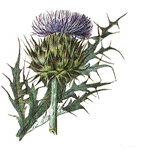Papers in the Biological Sciences

Svata M. Louda Publications
Document Type
Article
Date of this Version
6-2009
Abstract
Postrelease studies can provide data with which to evaluate expectations based on prerelease tests of biological control insects. In 2004, we observed Trichosirocalus horridus Panzer (Coleoptera: Curculionidae), the rosette weevil introduced into North America against Eurasian thistles, feeding on native tall thistle, Cirsium altissimum L. Spreng., in tallgrass prairie. In this study, we examined the rosette weevil's use of tall thistle, compared with its use of the co-occurring exotic bull thistle, C. vulgare (Savi) Tenore. For both thistle species, we quantified weevil frequency, abundance, and seasonal variation in incidence, using both timed observations at two sites over two growing seasons (2004, 2005) and dissections of thistle flowering shoots from 13 sites (2005). Based on prerelease information, we expected the Eurasian thistle to be the quantitatively preferred host plant for this Eurasian weevil. Instead, we found that both the frequency of infestation and the mean number of adult rosette weevils per plant were at least as high, and sometimes higher, on the native thistle as on the exotic thistle. Furthermore, adult weevil phenology coincided on the two host species. This study provides new quantitative evidence of nontarget feeding by another weevil released for thistle biological control; and it raises important questions for further research. We conclude that continued new releases, as well as augmentation of existing populations, of T. horridus should wait until more research is done on the impact of the nontarget occurrence now reported for this biological control insect.


Comments
Published in Environmental Entomology (June 2009) Vol. 38, Issue 3, pp. 731-740. Copyright 2009 Entomological Society of America. Used by permission.